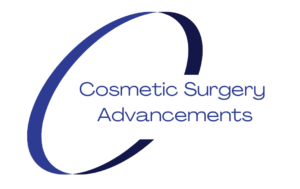Transumbilical breast augmentation (T.U.B.A)
The newest method for inserting breast implants for breast augmentation is the T.U.B.A method.
The first T.U.B.A procedure was developed in 1993. To date, this method has divided opinions among plastic surgeons. Plastic surgeons who perform T.U.B.A, advocate it is a safer method of breast augmentation, with lower rates of infection, seromas and hematomas, quicker recovery, and lower associated, capsular contraction rates.
The T.U.B.A procedure
Normally T.U.B.A is performed without general anesthetic and a local anesthetic with, or without twilight sedation is used. This allows you to remain conscious and observe the results so that you can advise when you are happy with the position and size of the implants and can determine when you want the consultant to stop adding more saline.
A video monitor is set up to enable the consultant to observe the images from an endoscopic camera, that is used to provide full vision at all times during the procedure. Local anesthetic is injected superficially around the navel and a small incision is made inside of your belly button. Two internal tunnels are then created through the fat beneath the skin, to enable the consultant to insert the endoscope, to observe the proper plane relative to the muscle and monitor for any significant bleeding. The endoscope is then withdrawn and tissue expanders are rolled up and externally manipulated by the consultant using their hands, to push them up through the tunnels and into the correct position inside the breasts. Once the consultant is happy with there position, the tissue expanders are overfilled with sterile saline from an intravenous bag. During this process the consultant will externally manipulate the development of the pockets, to ensure the implants remain in the correct position inside the pocket as they are filled. This technique is extremely important to ensure the correct development of the pocket and especially when a larger CC volume is desired, to prevent symmastia (when implants touch in the center of the chest).
Prior to removing the saline, an endoscope is inserted to enable the consultant to check the implants are correctly positioned in the proper plane and release persistent muscle fibers, to ensure the implants sit in the correct position. The saline will then be released slowly until the consultant is pleased with the size and symmetry when this procedure is performed under local anesthetic you will be able to advise the consultant when your breasts are the shape and size you desire. Once the shape and volume are pleasing the remainder of the saline will then be released and the tissue expanders are withdrawn. The endoscope is inserted once more prior to the insertion of the permanent implants to inspect the pockets and check for any significant bleeding which is extremely rare. The permanent, empty implants are then rolled up and the consultant will use the navel excision to insert a finger to push them into the tunnels. External manipulation is performed to push the implants up the tunnels and into the pockets using an endoscope to ensure correct positioning. During this process, slight negative pressure is applied via a syringe attached to the fill tube. Once the implant is correctly positioned inside the pocket saline is inserted to fill the implants to the desired volume as determined during the previous process with the tissue expanders. When the consultant is pleased with the shape and symmetry the fill tubes are removed and the implants are sealed. The remaining air is suctioned out from the tunnels and the naval incision is sutured and then covered with a small gauze covered by a transparent film dressing. The consultant may then position an elastic band around the upper pole of the breasts and around the abdomen, to provide support.
Recovery time after T.U.B.A breast augmentation
Recovery is faster, especially with implants filled to a larger cc volume, due to the absence of tension which is caused by excisions around the breast and the reduction in trauma to the tissues, compared to conventional breast augmentation. The possibility for edge necrosis (death of skin cells) is eliminated with T.U.B.A and infection and hematoma rates are also considerably lower, partially due to the pockets which have been formed by expansion instead of manual manipulation. This means they conform to the shape of the implant eliminating dead space that could harbor infection or hematoma. Patients report lower pain levels after T.U.B.A than with conventional methods of breast augmentation, even when the implants are placed in the subpectoral position.
Benefits of the T.U.B.A method
The T.U.B.A method enables the consultant to determine the correct position and shape of the pocket helping to ensure symmetry and prevent symmastia. Symmastia is a result of over dissection of the skin and muscle between the breasts over the sternum (breastbone) causing the 2 pockets that hold the breast implants to come together to form one pocket. This method may also improve the outcome when correcting moderate tubular-shaped breasts and help to prevent Mondor’s cords which look like vertical bands below the breast, running towards the abdomen. Mondor’s cords may feel tender and uncomfortable, however, they are harmless and normally disappear by themselves within several weeks to a few months.
Another significant benefit is a lower risk of damage to the sensory nerves of the nipple and breast and patients normally return to work within 48 to 72 hours. The bands are normally removed 10 to 14 days later and the final results are normally evident within 3 months due to the reduction in swelling compared to conventional breast augmentation.
To date, there are no records of fatality reported by any surgeon certified by The American Board of Plastic Surgery.
Disadvantages of the T.U.B.A method
The T.U.B.A method is not easy and requires specialist training and equipment when attempted by consultants lacking the correct training and experience, pockets may not be created in the optimal position and implants may not be positioned correctly resulting in unpleasing breast shape or height on the chest wall. Additionally, although TUBA can still be successfully performed with the presence of upper abdominal scars and umbilical hernias, if an undetected, upper ventral hernia is present this may result in the need to abandon the procedure.
The T.U.B.A method also eliminates the option to use silicone-filled implants which many consultants and patients report to feeling softer and more natural than saline-filled implants, especially when larger cc volumes are desired, with lower incidences of visible rippling.
Complications
- Faulty-valve in the breast implants
- Incorrect positioning resulting in an unpleasing shape or position of implants on the chest wall
- Visible rippling on the surface of the skin, especially with larger cc volumes
- Noticeable ridges from the creation of the tunnels along the abdomen
- Allergic reaction to local anesthetic
- Reaction to general anesthetic, in very rare cases, causes fatality
Questions to ask your consultant
- What training did you undertake prior to performing T.U.B.A?
- When did you start performing T.U.B.A?
- How many T.U.B.A procedures have you performed in the last 12 months?
- How many revision surgeries have you performed for patients that have either had complications or not been pleased with the result after T.U.B.A in the last 12 months?
- Do you prefer to use a general or local anesthetic, with or without twilight (IV) sedation?
- Will I need to stay in hospital overnight?
- Will there be any additional charges if I need to be admitted to hospital due to complications or reaction to anesthetic?
- Have any of your patients chosen an alternative method if they needed revision surgery after primary T.U.B.A breast augmentation?
- Will there be any additional charges if I require revision surgery?
- For what time period do you provide aftercare?
My advice
I have had 3 breast augmentations with silicone-filled breast implants, to achieve the shape and size I desired, all performed by the same consultant Douglas McGeorge in the UK over a period of 4 years. Personally T.U.B.A would not have been the best option for me due to a lack of breast tissue, as there would be a high likelihood of visible rippling with saline-filled implants. I also feel it is telling that many extremely competent and well-respected consultants do not perform T.U.B.A as they believe it is difficult to correctly position the breast implants for the most pleasing result.
If you believe T.U.B.A might be the method of breast augmentation you would prefer, it is vital to find a consultant appropriately trained and with experience of performing this procedure. T.U.B.A is currently not performed by plastic surgeons in the U.K so if you live in the U.K you will also need to evaluate the risks of travelling abroad, for more information about what to consider – Abroad

